UNESCO World Heritage Sites in NEPAL
World Heritage Sites in NEPAL
The small mountain kingdom of Nepal is blessed with such astonishing and unique sites that within the area of 147,181 sq km Nepal holds a considerably high number of places recongnised by UNESCO (United Nations Educational Scientific Cultural Organisation) as 'World Heritage Sites'. There are altogether ten World Heritage Sites in Nepal, seven of which are in Kathmandu itself. The list includes both natural as well as cultural sites. Nepal is blessed with one of the richest cultures in the world. Culture has been called 'the way of life for an entire society'. The statement holds particularly true in case of Nepal where every aspect of life, food, clothing and even occupations are culturally guided. The culture of Nepal includes the codes of manners, dress, language, rituals, norms of behavior and systems of belief.
Cultural Sites
The cultural heritage of the Kathmandu Valley is illustrated by seven groups of monuments and buildings which display the full range of historic and artistic achievements for which the Kathmandu Valley is world famous. The seven sites include the Durbar Squares of Hanuman Dhoka (Kathmandu), Patan and Bhaktapur, the Buddhist stupas of Swayambhu and Bauddhanath, and the Hindu temples of Pashupati and Changu Narayan. Click on the following links to get detailed information about the individual sites.
Bhaktapur Durbar Square
Bhaktapur lies on the Eastern part of Kathmandu valley. Also known as Bhadgaon or Khwopa, Bhaktapur is regarded as the abode of ancient Nepali culture, custom and alluring arts pieces of excellent craftsmanship. Each historical monument represents medieval culture, religious and custom of Nepal. Newari populace has largely dominated Bhaktapur. Bhaktapur is the only place in Nepal which has remained untouched by western culture. Lion Gate, Golden Gate, Art Gallery, Statue of King Bhupatindra, Nyatapola Temple and fifty-five windowed Malla palace are the living prides of Bhaktapur. The place houses finest restaurants and hotel to cater to the needs and requirements of tourists.
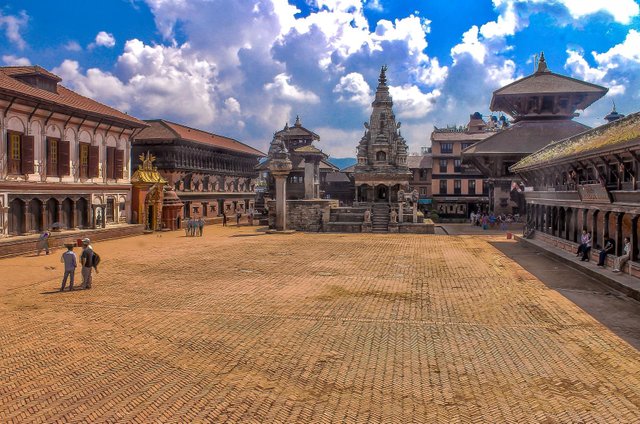
Kathmandu Durbar Square
Centered in Kathmandu, Kathmandu Durbar Square has Hanuman Dhoka, Degutale Temple, Taleju Mandir, Nasal Chowk, Nine storey Basantapur Tower, Panch Mukhi Hanuman Temple, Mul Chowk, Mohan Chowk, Sundari Chowk, Tribhuvan Museum, King Mahendra Memorial Museum and Kal Bhairab temple in its vicinity. Hindu Mythology boasts that if a person interprets 17th century stone inscriptions written in 15 different languages on the walls of the palace of Hanuman Dhoka, there would be instant flooding of milk from the wall. Hanuman Dhoka was the former Royal Palace of the Malla kings and later was passed onto the Shah dynasty. Royal family lived in the Hanuman Dhoka palace till 1886 and thereafter shifted to Narayanhiti palace. However, the palace is still used for ritual and ceremonial occasions. A new King is crowned inside the palace. The palace has 17th century statue of Hanuman to the left of the palace entrance and amazing sculpture of Lord Narasimha. The palace bears the historical reminisce of Royal family, culture and religion of Nepal. Museums inside the palace lets one explore the culture, religion, custom, tradition, architecture, history of Royal palaces etc.
()
Patan Durbar Square
Lying connected to the 5 kms South-East of Kathmandu Valley by Bagmati River, 459 hectares of Patan is bounded by 4 stupas built by Emperor Ashoka in the 3rd century BC as recorded in the history. Patan is also called Lalitpur. There are several legend attached to the origin of the term, Lalitpur. One such legend says that in the ancient time Kathmandu was engulfed with severe drought and three people were assigned to summon God Red Machhendranath from Kamaru Kamachhya, a place in Assam, India, into the valley for rainfalls. Vishwanath temple, Bhimsen temple, Marga Hiti, Mani Mandap, Café Pagoda, Rato Machhendra Temple, Minnath, Rudra Varna Mahavihar etc are the major attractions of Patan.
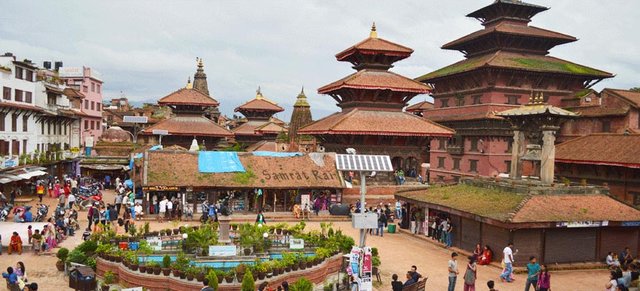
Swayambhunath
It is 3kms away from the West of Kathmandu. Ancient tale has it that thousands of years ago Swayambhunath was an island. Later a stupa was built. King Manadeva contributed in the making of the stupa in 460. After the invasions from Mughal, it was distorted and had to undergo renovation in the 14th century. King Pratap Malla in 17th century further enhanced the architecture and also added a stairway to get to the stupa. At present, the stupa is a solid hemisphere of brick and clay, supporting a lofty conical spire capped by a pinnacle of copper gilt and has Lord Buddha’s eyes adorned on all the four sides of the spire base. Buddhists regard it as the holiest place. Swayambhunath also offers a majestic view of the entire Kathmandu valley.
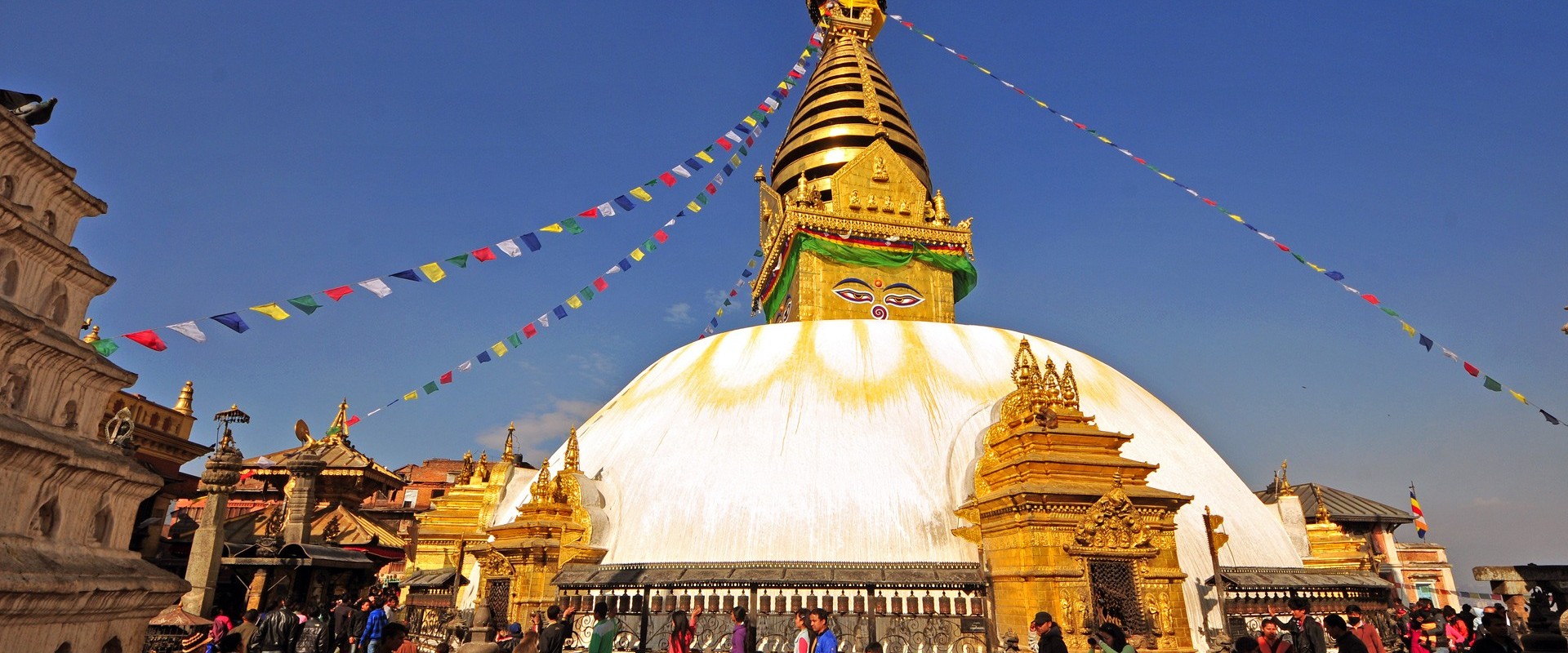
Pashupatinath
As the name indicates, Pashupatinath temple is a temple of Lord Shiva and is the holiest place for Hindus. The sacred temple lies on the banks of sacred Bagmati River 5 kms east of Kathmandu city. Non-Hindus are strictly prohibited from entering the temple. It has two-tiered roof and four silver doors. Devotees from all over the world come here to pay their homage to lord Shiva.
(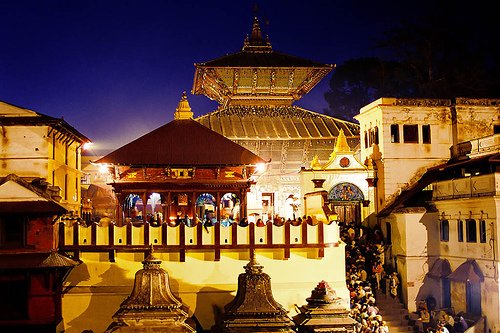 )
)
Boudhanath
Boudhanath epitomizes Tibetan Buddhism. It lies 8 kms East of Kathmandu and was built by Licchavis King Man Dev in the 5th century A. D. Its colossal and ancient stupa is regarded as one of the world’s biggest stupa and has been built on a stepped octagonal base and inset with alcoves representing Buddha and his teachings. After Chinese invasion in 1959, Tibetans in thousands came to this famous Buddhist Chaitya and energized the stupa. The stupa is surrounded by various temples or ‘gompas’.
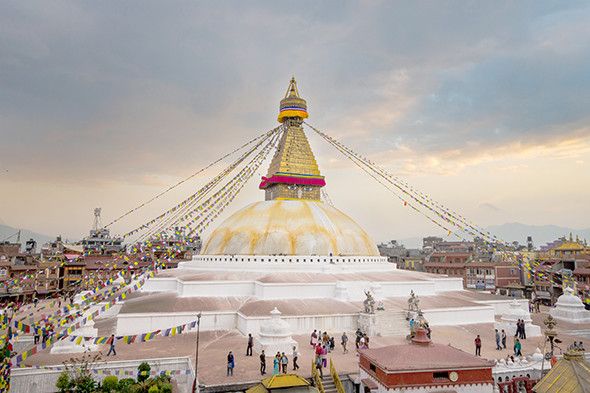
Changunarayan
Two-tiered Changunarayan temple is 15 kilometers away from Kathmandu city. Since this is the temple of Lord Vishnu, also called Narayan and is situated near Changu, the temple has been named so. Stone inscription of 464 A.D and other architectural master piece featured in the temple showcase ancient history of Nepal. The temple also bores the sculptures of Vishnu’s ten incarnations; Vishwaroop, Vishnu Vikranta, Vishnu riding Garuda, Nar-Singha Vishnu etc. Temples of Kileswar Shiva, Chinnamasta Devi and other gods and goddesses are also present in the vicinity of Changunarayan temple.
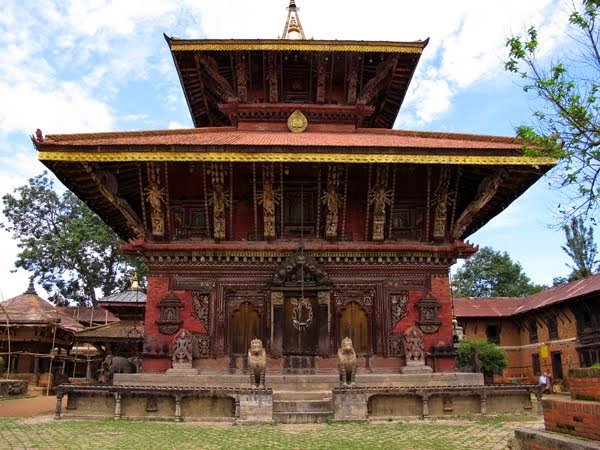
Lumbini
Lumbini lies in the southern Terai plains of Nepal and is about 300 kilometers Southwest of Kathmandu. It is the birthplace of Siddhartha Gautam Buddha and is therefore regarded as a sacred pilgrimage site for Buddhists. In 250 BC, Emperor Ashoka built a large stone pillar containing an inscription about the birth of the Buddha. Lumbini bears not only historical and religious significance but also cultural significance. Lumbini Garden, Maya Devi Temple, Tara Foundation, World Peace Pagoda, China Temple, Thai Monastery, Burmese (Myanmar) Temple, Nepal Buddha Temple and Dharmaswami Buddhist monastery are the major attractions of Lumbini. There is a museum and a research center for Buddhism.
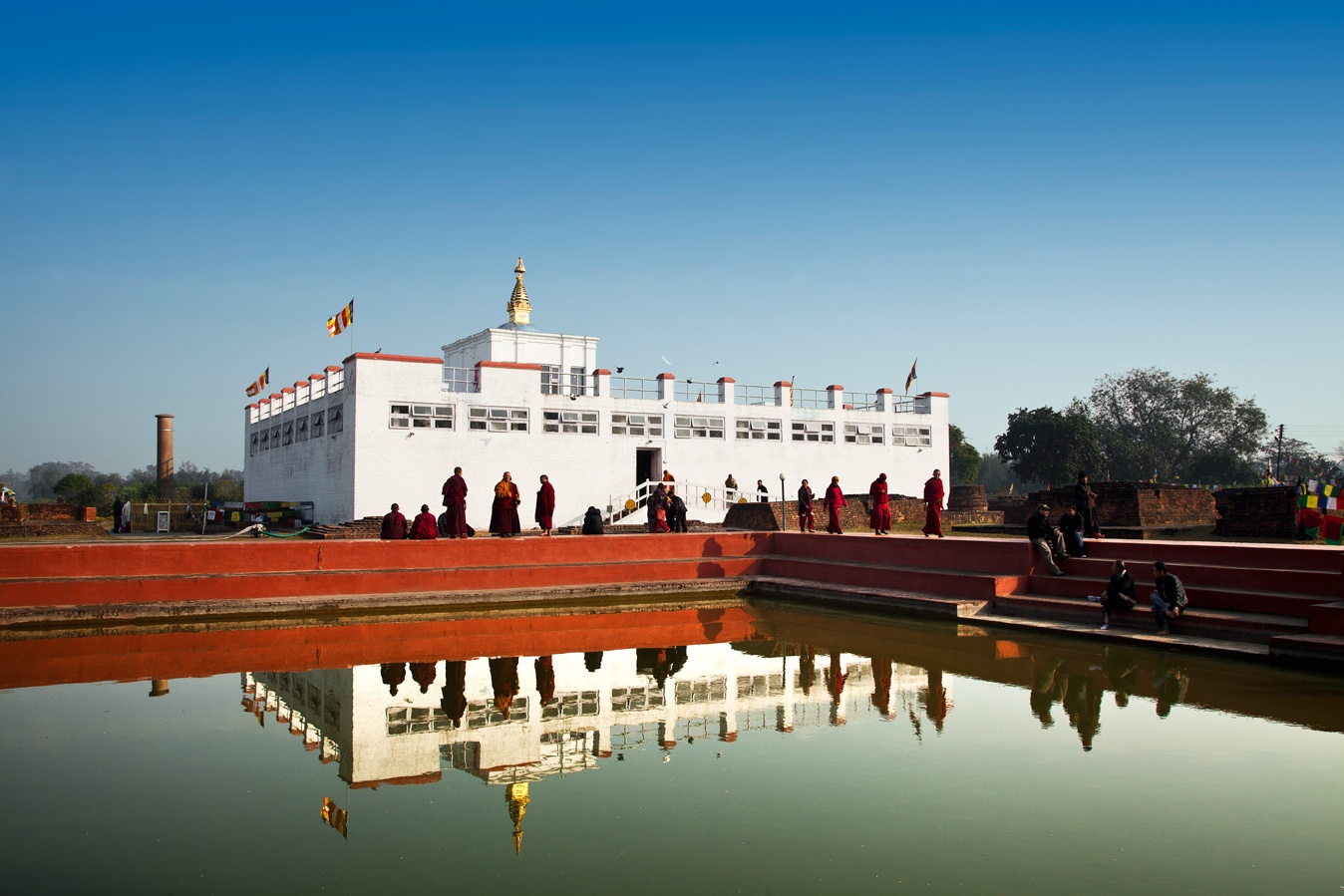
World Heritage Sites (Natural)
Chitwan National Park
Royal Chitwan National Park has stretched across an area of 932 sq. kilometers and lies in the inner Terai belt of Chitwan. The park offers a very worthwhile excursion through jungle safari. With nature at its best you will come across the rarest species of eco-system. Canoeing through the lake of the park will have you encounter with crocodiles and more fun-filled adventure. During your stay in one of the resorts of the park, you will be guided on a cultural tour to the lifestyles of Chitwan people. In the evening and at night you can indulge in most exotic events of your choice.
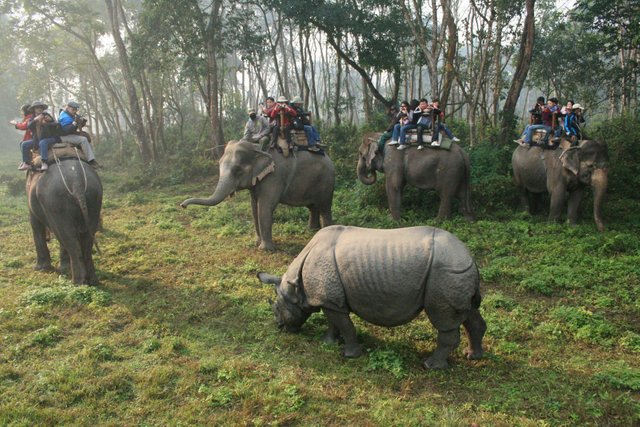
Sagarmatha National Park
Sagarmatha National Park situated at the foothills of Himalayas has occupied an area of 1,148 sq. kilometers. It offers the most magnificent views of rugged mountains, glaciers, valleys and river. The park houses an amazing array of plant species, birdlife and exotic animals. Plant species like blue pine, silver fir, rhododendrons, birch etc have glorified the beauty of the park. On venturing into the park, one may encounter rare species like snow leopard, pandas, lynx etc. Birdwatchers can have the best sightseeing experience while viewing rare bird species like snow cock, pheasant, snow pigeon etc.
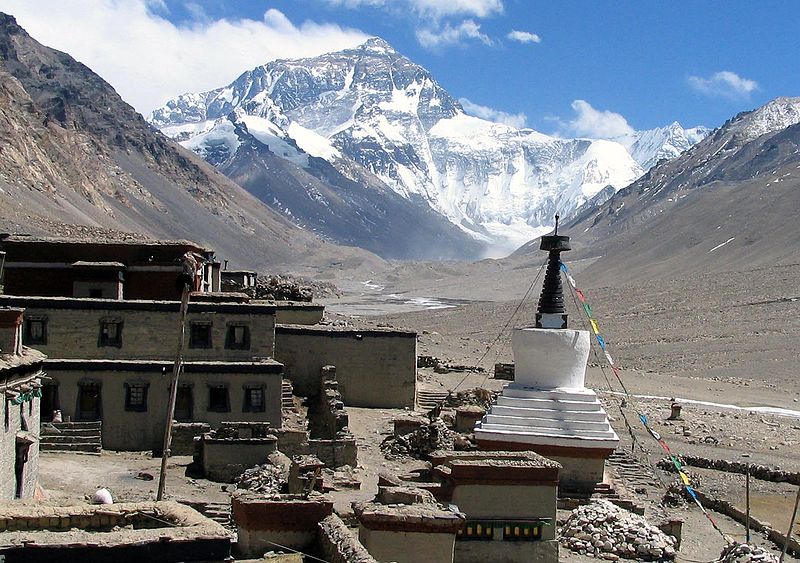
Nice
Highlighting Nepal through social media ; good job . I am also Nepali .Thanks for sharing ,
Upvoted !
By the way ,I started following you and I would appreciate your follow back too .
please visit my blog and vote me too
followed n upvoted u :)